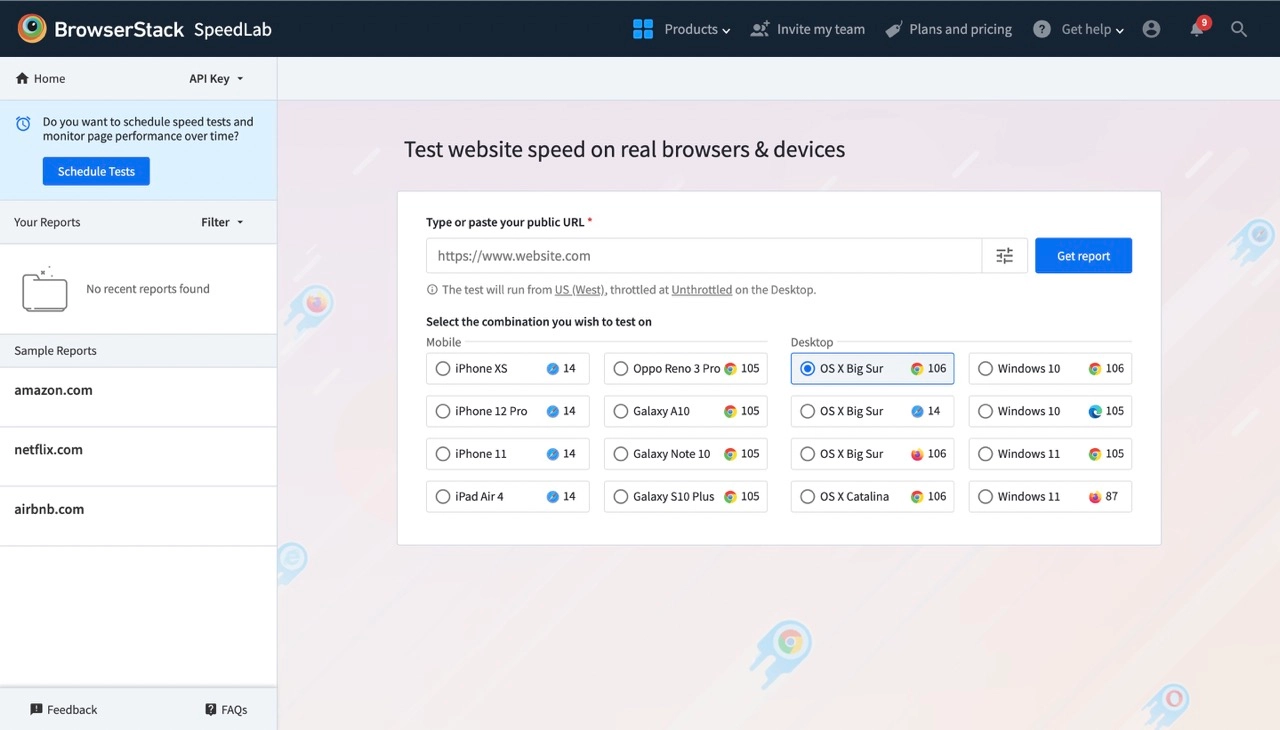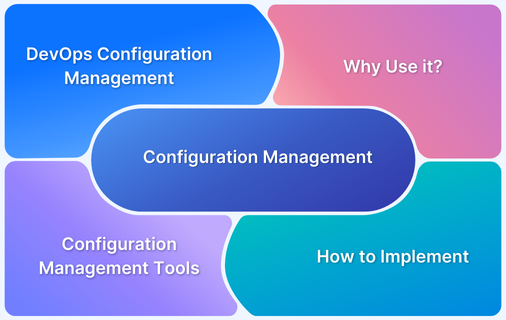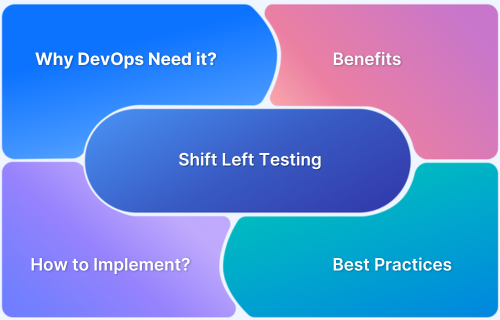The primary goal of DevOps is to enhance the efficiency of the Software Development Life Cycle (SDLC) by collaborating and optimizing people, processes, and technology. However, challenges like cultural barriers, poor communication, legacy infrastructure, and process inefficiencies often hinder its adoption and success.
Common DevOps Challenges and their Solutions
DevOps challenges, like siloed communication, tool integration issues, and inconsistent environments, can slow deployment cycles, increase errors, and reduce team efficiency. As a result, these may delay innovation and impact the overall reliability of software delivery pipelines.
Here is a Quick overview of the top challenges in DevOps:
- Environmental Challenges: Time wasted due to inconsistent setups during code transitions across teams.
- Team Maturity and Competence: Limited expertise and siloed workflows hinder DevOps adoption.
- Obsolete Practices: Legacy tools and siloed teams slow down modernization efforts.
- Monitoring Challenges: Lack of visibility across processes causes delays and errors.
- CI/CD Performance Issues: Poor CI/CD setups result in slow websites and app performance.
- Version Control in Automation: Unexpected updates cause pipeline compatibility issues.
- Security Issues: Vulnerabilities in the pipeline increase risks of cyberattacks.
- Scalability of Test Infrastructure: Difficulty scaling testing capabilities with increased data and devices.
- Complex Debugging Reports: Difficult-to-understand reports delay bug fixes and product releases.
1. Environmental Challenges in Devops
During DevOps the ownership of the codebase changes from one team to another; from development to testing, to deployment and production. During such transitions there is a general waste of time and effort as the environments used by these teams are separately configured and the codebase must be modified to work smoothly on all these environments. This sometimes causes teams to also waste time trying to investigate for problems in the code rather than in the environment on which it is run.
Solutions
Creating infrastructural blueprints for Continuous Delivery enablement and making sure that all environments are identical. This usually requires all teams to get together and plan the Continuous Delivery process to ensure smooth transition.
A good solution to enable this is to adopt a cloud-based infrastructure for DevOps enablement. The different parts of the DevOps pipeline, viz. coding, builds, testing, deployment, and post-production monitoring require different tools to enable and are hosted on different environments.
Hosting these pipelines on the cloud helps to create a centralised architecture that helps different teams to access the codebase and continue to develop the pipeline as the cloud environment manages the environment transition.
Pro Tip : BrowserStack is an industry leader in cloud-based infrastructure for DevOps with over 3000 real browsers, devices and OS available at the touch of a button. It offers integrations with popular CI/CD tools like Jenkins, Travis CI, TeamCity, Bamboo, etc and facilitates automated testing by leveraging the power of Appium, Espresso, XCUITest, EarlGrey, Cypress, Playwright, Puppeteer.
Run DevOps Tests on Real Devices
2. Challenges with Team Maturity and Competence
The level of maturity and competence a software engineering team has with the Software Development Life Cycle is directly related to their ability to be able to adapt to the DevOps transformation of these processes.
One of the key reasons behind the adoption of DevOps is the need to deliver quality software in shorter deadlines in a more reliable fashion. The DevOps process seeks to transform the conventional Software Development process by creating a continuous cycle of Code-Build-Test and to better integrate the development and operations processes to be able to achieve its goal of quality software delivered on time.
Solutions
Organisations adopting DevOps need to adopt the correct tools and technologies and should be able to invest in the correct training and upskilling for their employees. A robust devops culture requires the following steps :
- Building new interactions points to increase inter-organization communication
- Constant feedback gathering from stakeholders to improve pipelines and processes
- Prevent teams from working in silos
- Use relevant metrics to guide DevOps adaptation and improvement
3. Dealing with Obsolete Practices
Organisations adopt DevOps looking to orchestrate a transformation in their SDLC processes, and a major reason for this is their struggle to modernise legacy processes and practices.
Organisations historically have worked in silos, with specific teams dedicated to performing certain tasks such as development, testing, and operations. These teams usually work in silos and have minimal communication with each other. It does not help that these teams work with outdated tools that do not allow for greater flexibility of communication and pipeline efficiency.
Solutions
Though DevOps pipelines depend on automation, some parts still require human communication and cooperation. Having transparency and cooperation in teams helps smoothen the pipelines and improve overall efficiency.
Read More: 5 DevOps Tools Every Team Must Have
BrowserStack Live for Teams allows teams to collaborate effectively by allowing seamless connections with existing tools and helping to track bugs. Issues can be filed in an organised manner and assigned to the relevant members on the same dashboard thus creating a unified approach to handle the entire DevOps pipeline.
Try BrowserStack Live for Teams
4. Challenges with Monitoring the overall DevOps process
One of the most common problems with DevOps is the challenge in holistically monitoring the entire process. DevOps consists of several moving parts and each of these have different metrics to judge their effectiveness.
For example a metric like number of code branches or deployment frequency might deal with the CI/CD process; whereas something like Defect Escape Rate is a part of the Continuous Testing pipeline.
Often there is lack of clear visibility over the entire process and that often leads to finger-pointing and delays in production. Any manual processes made to envisage this leads to extensive labour and risks incorrect updates due to human error.
Solutions
Continuous Monitoring tools like Nagios Core can allow the continuous overview of applications, metrics, services, network components, etc. It allows users to have a birds eye view of the infrastructure and detect critical issues. It also offers useful altering services to resolve these issues and provides a great degree of scalability and flexibility. It also provides up to date logs of any DevOps events, failures, code crashes, and system outages.
This automated viewport allows teams to exactly know what has gone wrong and where and subsequently make the changes required to correct it.
5. CI/CD Performance Issues
A suboptimal implementation of the CI/CD pipeline leads to recurring issues such as slow page loads for websites, delayed responses from servers, and poor memory optimization that hampers the overall performance of the application.
A Deloitte study indicates that suboptimal website performance increases the bounce rate and decreases overall time on the site. A mere 1 second delay can result in
- Page views reducing by 11%
- Customer satisfaction dropping by 16%
- Conversions decreasing by 7%
Solutions
Automated testing principles can be extended by the QA team to check for performance using tools like Apache JMeter.
Tools like BrowserStack SpeedLab allow real-time web performance testing and scores the website under test on key performance metrics for an overall enhanced UX.

This free tool allows the running of speed tests for monitoring the events occurring during page load including CPU Processing Breakdown, Navigation Timing API, and Page Resource Summary. It also allows the comparison of mobile and desktop screenshots for comparing render time to provide insights and optimise performance.

6. Version Control in Test Automation
DevOps relies on version control for all components and processes to work on stable versions. However, the unexpected update or change in any process can cause the entire pipeline to break due to compatibility issues. This can commonly occur during automated system updates.
Suboptimal automated tests are the perfect storm for any Continuous Automation process in the DevOps pipeline. Since DevOps focuses on delivering production ready code in short sprints, it is imperative to have the correct automation testing tools and techniques in place to avoid flawed tests.
Read More: DevOps Testing Strategy
Solutions
One of the most common solutions to this is to put a forced stop to all auto-updates to make sure that no software updates happen without manual intervention and that unstable versions are not incorporated just for the sake of it.
It is of the utmost importance that the QA team chooses the correct testing tools which are compatible with the systems and the languages being used. Also model-based testing helps in furthering this process by proactively identifying red flags even before they cause major issues to the overall system.
7. Security Issues
Security vulnerabilities in the DevOps pipeline make it susceptible to cyber-attacks and can lead to sensitive information being compromised.
Solutions
Some potential solutions are:
- Locking parts of the pipeline where irregularities are detected
- Having an effective monitoring system to detect and resolve threats quickly
- Mitigate risks by limiting the amount of sensitive information in the code and addressing vulnerable code using Code Analysis tools.
8. Scalability of Test Infrastructure
One of the major challenges in Continuous Testing is to be able to scale the operations and the test capabilities at the same time to handle increased volumes of data, devices, etc
Solutions
Choosing a Selenium based test infrastructure that flexibility handles version updates, increased device load, and manages data capacity in a stable manner.
9. Interpretation of Complex Debugging Reports
Several test reports are too complex to understand by all the stakeholders and this delays bug fixes thereby affecting product release velocity.
Solutions
- Integrating real-time reporting
- Implementing Data visualisation to debug faster
- Analysing the event logs at various points in the DevOps pipeline to ensure that dependencies are being handled correctly and the build generated is consistent with the standards expected
Pro Tip: BrowserStack’s Test Insights offers an interactive dashboard to help obtain actionable insights. This helps teams to recognize critical issues or bottlenecks and accelerate product release velocity.

Summary
Though there are a number of challenges in DevOps, with the right tools and training they can all be overcome with ease. Regardless of the DevOps challenges being faced by the organisation, having a robust testing methodology that allows for accurate results on real browsers and devices is a must.
BrowserStack provides more than 3000+ real browsers and devices on a Cloud Selenium Grid with 99% uptime and assists the product team in many ways:
- It allows QA’s to test code instantly on real devices
- Speeds up efforts by leveraging the power of parallel testing
- Provides effective cybersecurity measures as BrowserStack is GDPR and SOC2 compliant, implementing HTTPS, Privacy Shield Certification, and the automatic deletion of all data after each test on any device.






